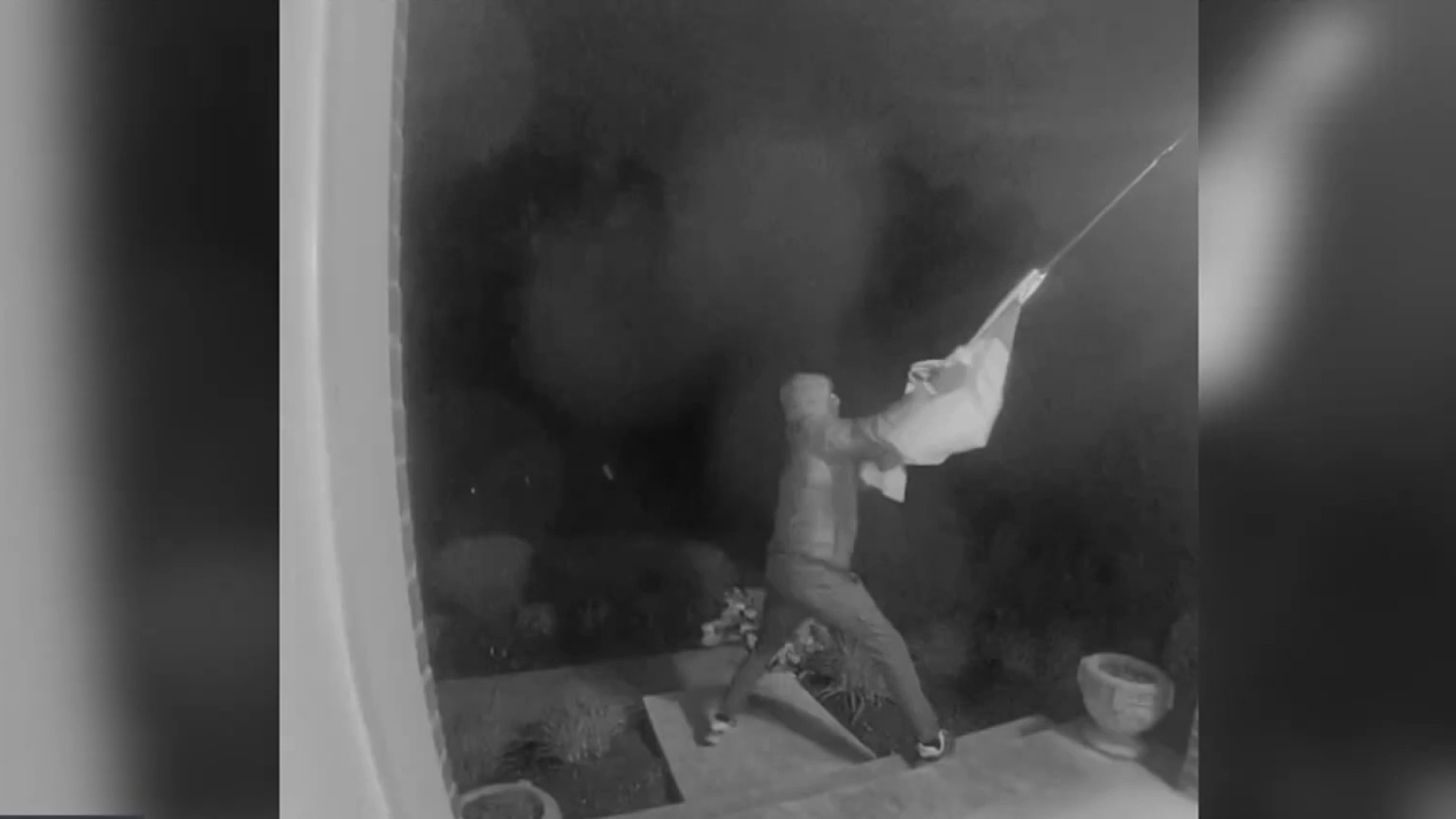A Tyrannosaurus rex is joining the dinosaur fossil collection on the National Mall after a 2,000-mile journey from Montana.
Paleontologists and curators unveiled parts of a nearly complete T. rex skeleton -- including its jaw, with teeth as big as bananas -- at the Smithsonian's National Museum of Natural History on Tuesday.
A large leg bone and the T. rex teeth drew "ahs" as Museum Director Kirk Johnson told a crowd that the skeleton ranks as one of the top five T. rex skeletons discovered because it's about 85 percent complete.
"It lay in the ground much as it had died on the shores of a stream in Montana just over 66 million years ago,"Johnson said.
For the first time since its dinosaur hall opened in 1911, the museum will have a nearly complete T. rex skeleton.
The bones arrived via FedEx truck, portioned into 16 carefully packed crates. And in true D.C. style, it all arrived with a police escort.
T Rex gets a police escort...66 million year old dino has arrived! @nbcwashington #DC https://t.co/T5otQiHp0V — Angie Goff (@OhMyGOFF) April 15, 2014
The massive fossil, known as "Wankel T. rex," is about 80 to 85 percent complete. It was found in 1988 by rancher Kathy Wankel on federal land near the Fort Peck Reservoir in eastern Montana.
"Pretty thrilling for a couple of Montana kids," Wankel recalled, chuckling.
Local
Washington, D.C., Maryland and Virginia local news, events and information
Initially, she spotted about three inches of bone sticking out of the ground, and she and her husband dug out a small arm bone.
"We were so thrilled we had found a bone; we called that a mega find," she said at the museum. "But I think now this is a mega find."
She said she was proud to see the specimen in a national museum.
The fossil was on loan to the Museum of the Rockies in Bozeman, Mont., for more than two decades before the Smithsonian reached a 50-year loan agreement with the U.S. Army Corps of Engineers to display the skeleton.
Previously, the Smithsonian only had plastic and plaster reproductions of a T. rex.
"Sixty-six million years [old]. To see something like that... here? Oh, it's so exciting," said Smithsonian employee Adrianne Massey.
The skeleton was supposed to be delivered to the National Museum of Natural History last year, but its delivery was delayed by October's government shutdown.

Only a few museums display such nearly complete skeletons, most notably in New York City, Pittsburgh, Los Angeles and Chicago. But the Smithsonian has long wanted a T. Rex of its own for the natural history museum, which draws more than seven million visitors each year.
Many people think of the T. rex as the ultimate dinosaur, and it's the first thing they want to see, said paleontology curator Hans Sues. Now the museum will be able to show a real skeleton and allow scientists to continue studying it.
"In some ways, I think of it as the most American of all dinosaurs: this big, huge animal that was dominating its ecosystem,'' Sues said.
Scientists want to learn more about how T. rex related to other animals and what its short arms were used for, Sues said.
Tuesday marked the first day visitors could get a first look, as curators began unpacking and examining each bone of the skeleton. The process will continue over the next six months.
But it will take five years for the museum to overhaul its dinosaur hall with the T. rex mounted as the centerpiece of a $48 million gallery devoted to the history of life on Earth.
While pieces of the exhibition have been updated over time, this will be the first comprehensive reimagining of the dinosaur hall since it opened in the early days of paleontology, Johnson said.
"There's so many things that have happened in science in the last 100 years that this will be a great new hall,'' he said.
T. rex was one of the largest meat-eating animals to ever live on land. It weighed more than five tons and reached 40 feet in length. The dinosaur roamed across much of western North America between 66 million and 68 million years ago.
"He's big and scary," said one young visitor.
"I can't wait," said another young guest.
Most fossils have been discovered in Montana, the Dakotas, Wyoming and in Canada.
The Smithsonian's current 103-year-old dinosaur hall closes April 27 for renovations. A temporary dinosaur exhibit will open later this year.



